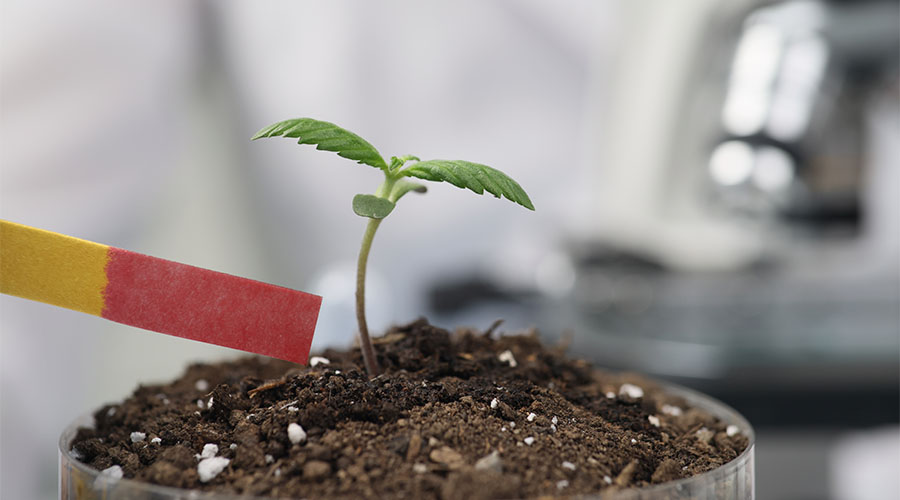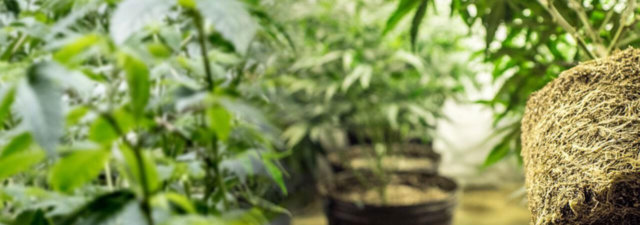When it comes to providing nutrients to cannabis plants, most growers focus on the NPK (Nitrogen, Phosphorus, and Potassium) triumvirate. However, it’s a mistake to neglect micronutrients such as iron, calcium, and magnesium.
Copper is another vital addition since it plays a huge role in how your seeds grow and develop. All life forms need copper for their basic chemical building blocks, and marijuana plants are no different.
This article outlines the benefits of copper for cannabis, how to spot signs of deficiency, and the amount of copper your plants need. It also describes what happens when you overdo the copper.
Why Do Your Cannabis Plants Need Copper?
All land plants, including marijuana, need copper to build plastocyanin, a protein that’s crucial in photosynthesis because of how it helps transfer electrons. When your plants get enough copper, you benefit from better-tasting buds because this micronutrient promotes growth and general plant wellness.

Here are some other benefits of ensuring your marijuana plants get enough copper:
- More aesthetically pleasing plants because copper helps with chlorophyll production, thus ensuring your leaves are a bright, pleasant green
- This metal has antifungal properties, which prevent damaging fungi from forming
- Enhanced protein and enzyme production, which account for the aforementioned boost in growth
- Better development of shoots and leaves, so your plants are more likely to provide a rich yield
What Are the Symptoms of Copper Deficiency in Marijuana?
Although it isn’t necessarily the most common example of nutrient deficiency, it’s imperative that you keep an eye on your plants to ensure they’re getting enough copper.
In general, you’ll spot evidence of copper deficiency on new leaves, usually at the tips. There, you might see a strange bluish coloring with purple undertones. Other symptoms include:
- Bright yellow or white edges on leaves
- A slowdown in growth
- Leaves with a metallic aesthetic
- Smaller flowers during the blooming phase
- Twisted or curled leaf tips
The above are usually early signs of copper deficiency, and if you act at that point, you can prevent serious damage from occurring.
However, if left untreated, you may discover that the leaf stems turn purple, and the symptoms outlined above become more obvious. For instance, entire leaves become yellow, and tissue death (necrosis) will make an unwelcome appearance in the form of brown spots.
The leaves noticeably curl upwards and have a stiff appearance. Eventually, the necrosis spreads, ensuring that the leaves are crispy. Finally, they will break, crumble, and die.
Copper Deficiency Causes
While the obvious reason is “your plants aren’t getting enough copper,” it’s worth explaining why this happens. Marijuana plants only need relatively tiny amounts of copper, and there’s usually enough in fertile soil or even in the water you use.
A problem with the pH level in the growing medium is the main reason why copper deficiency occurs in the first place. When the optimal pH range isn’t adhered to, nutrient lockout occurs. Therefore, even though there are ample nutrients in the growing medium, your plants can’t access them.
It’s also worth noting that excessive micronutrients, such as iron or aluminum, in the growing medium can hinder your plants’ ability to absorb copper. Another reason for copper deficiency is plant disease. Finally, incorrect levels of CO2, or growing your plants in the wrong temperature and humidity, can also contribute.
Fixing Copper Deficiency
First of all, it’s essential not to mistake copper deficiency for nitrogen deficiency or symptoms of overwatering. This happens because the symptoms are similar initially. However, over time, marijuana plants with a copper deficiency have shiny, hard leaves with a bluish hue.
First and foremost, calibrate your pH meter and measure the pH of the growing medium. You want the pH to be between 6.0 and 6.8 if soil is the growing medium. A range of 5.5 to 6.5 is optimal when growing marijuana hydroponically.
If the pH is slightly out of these ranges, you can use pH up or pH down products as necessary. If the pH is a long way out of range, you may need to perform a “nutrient flush.” This involves rinsing away excess nutrients and buildup in the root zone in the growing medium.
If your plants are combating a pest infestation, use suitable organic pest control tactics to nurse them back to health.
How Much Copper Is Enough?
Unquestionably, prevention is better than cure when it comes to copper deficiency. You can stop it from happening by ensuring your plants get enough from the beginning.
Step one is to measure the pH of your growing medium regularly from the start of the growing cycle. It’s also important to supply your crop with the optimal ratio of other micronutrients.

Above all, you must make sure your plants get the right amount of copper. Although it is not an exact science, there are some guidelines worth following.
For instance, 0.05mg per liter of water is about right in the germination phase when growing marijuana indoors. You can bump that to 0.25mg per liter during the vegetation stage. When your plants are blooming, approximately 0.4mg per liter should prove adequate.
Some growers in the United States place dimes or quarters in water overnight and use it to water their plants the following day!
Outdoor growers may supplement soil that’s nutritionally deficient with up to 15 pounds of copper per acre. That’s generally enough to ensure the soil has adequate copper to support marijuana plants for many years.
What Happens If Cannabis Plants Get Too Much Copper?
Of course, it’s entirely possible to give your plants excess copper, especially since they don’t need a great deal of it. If you use a high-quality commercial fertilizer, you really shouldn’t have this problem. Nonetheless, if you see the following issues, it could be a sign of copper overconsumption:
- Decreased plant growth
- Low-quality flowers
- Reduced branch development
- Black or brown spots on the leaves, usually starting at the tips
- Root damage
Copper availability increases when the growing medium’s pH is low, so your first step is to measure the pH. If it is outside the recommended range, use a pH UP product to decrease the medium’s acidity. Once again, if the pH is much too low, a nutrient flush might be necessary.
Don’t Cop Out When It Comes to Copper for Your Marijuana Plants
Take note of how much copper your plant is consuming and look for excessive consumption or copper deficiency. If you spot the symptoms early, acting fast can prevent things from getting out of control.
In general, your plants can recover within a week. If you notice that the new growth is healthy, the copper-related issues are likely gone, and you can breathe a sigh of relief. Finally, when it comes to copper, a little goes a very long way when growing marijuana plants, so don’t go overboard.


![How to Properly Store and Preserve Cannabis Seeds [Explained]](https://wayofleaf.com/wp-content/uploads/2020/05/wol_how-to-properly-store-and-preserve-cannabis-seeds-640x225.jpg)


![What Is a Feed Chart? [Learning to Grow Marijuana 101]](https://wayofleaf.com/wp-content/uploads/2018/11/mj_what-is-a-feed-chart-growing-cannabis-640x225.jpg)


![5 Ways to Prevent Plant Stress [And Save Your Weed Crop…]](https://wayofleaf.com/wp-content/uploads/2018/08/wol_ways-to-prevent-plant-stress-640x225.jpg)

![Drying and Curing Cannabis Buds [The Easy Guide]](https://wayofleaf.com/wp-content/uploads/2018/07/drying-and-curing-cannabis-buds-1-640x225.jpg)

